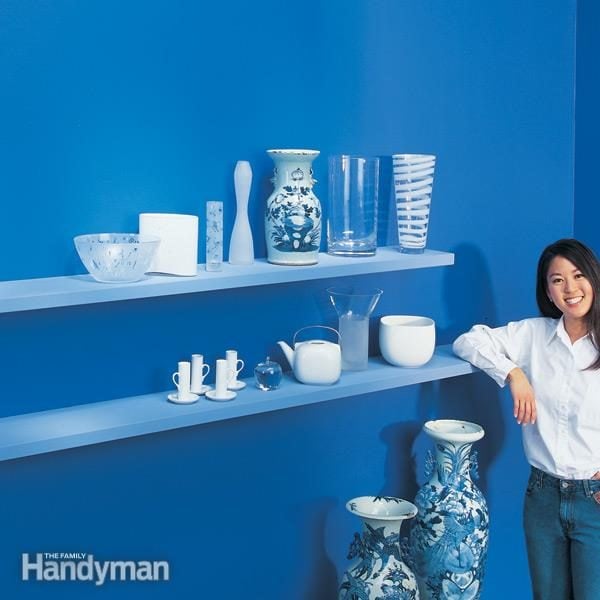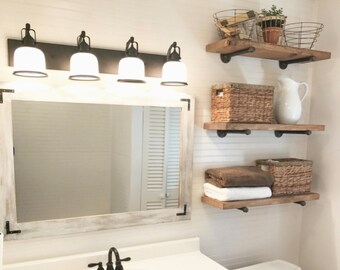How To Build Floating Shelves — The Family Handyman
Wall anchors, also referred to as molly plugs, will help you build a sturdy foundation on your shelf. Regular hollow wall anchors are fine for plaster; for drywall you'll need butterfly or toggle anchors.
Without that attachment, the rod can be bent downward much easier. This equates to lower floating shelf weight capacity and presumably shelf sag. To avoid each, connect the whole bracket to one thing solid, ideally blocking, like within the illustration.
Before deciding which anchors to purchase, contemplate what you want your cabinets to hold. Anchors are rated for how a lot weight they can support, but to be secure, it’s greatest to stay on the low finish of an anchor’s max weight rating.

How do I make my floating shelves thicker?
The best rule to follow is this, keep the floating shelf bracket back bar 1/2" thinner than your shelf is thick. For example, if you are floating a 2” thick shelf, the ideal shelf bracket should have a flat back bar that is 1-1/2” wide.

Floating shelves mounted into the periodic stud won't be as sturdy as floating cabinets mounted right into a strong backing that runs along the complete shelf. The gaps between mounting points will introduce flex within the bracket and the shelf can sag at worst, and might be weaker at best. In the illustration, think about that the blocking is removed and the center rod of the floating shelf bracket is not connected to anything behind it.
A floating shelf bracket and consequently, a floating shelf, is simply as sturdy as its weakest attachment point. If you solely screw your floating shelf bracket into two studs then the whole shelf system is actually supported by only these two screws.
Floating cabinets can solely preserve excessive weight capacities if they're mounted into something strong like wall studs or masonry block. They maintain essentially the most weight when they are secured into one thing stable all the way throughout the length of each shelf.
- Most homes are stick body construction, AKA have wooden studs framing the partitions.
- Floating cabinets mounted into the periodic stud will not be as strong as floating shelves mounted right into a stable backing that runs along the entire shelf.
- The drawback for floating cabinets on this kinds of wall, is that the solid mounting floor you need to help them (studs) are spaced each 16” apart.
They basically have to do all the work to assist the bracket, shelf, and every little thing on them. In circumstances where weight capability isn’t critical, this isn’t an issue. My pal Steve D solely hangs a couple of Spandex body fits from his floating cabinets. Eric G, however, has a small bowling ball assortment he likes to display. Clearly weight capacity matters more for Eric.
Most houses are stick frame building, AKA have wooden studs framing the partitions. The problem for floating shelves on this forms of wall, is that the strong mounting surface you should support them (studs) are spaced every sixteen” apart.

Materials for bathroom floating shelves:

If there are gaps where the bracket is not fixed to one thing solid, flex and sag can occur. Take a second to contemplate as you view the following illustration. So the strength of the shelf is achieved by way of the way it's inner construction is connected to the wall. Ideally if you hit studs with screws or bolts you are method ahead of the game. If that's not possible then attaching with fasteners that clamp to the again of the sheet rock to carry the construction in place is the next best option.
Step 2. Cut and attach sides and top to the bottom.

If you’re going to be attaching your floating shelf and bracket to a wall stud, you do not need any anchors. If you are working with plaster or drywall, however, additional assist is important.

